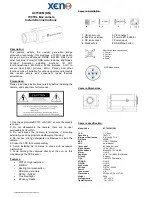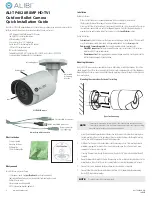
85 mm or more:
When the lens is set to the maximum focal length of 105 mm, magnification is approximately three times
greater than at 38 mm and you will be able to obtain genuine telephoto photographs. In contrast to wide-angle
shots, the perspective is narrow, and the depth of the field becomes more shallow. Because the depth of field is
not so great, objects in front of or behind the subject being photographed will be out of focus; make use of
this in composing your photographs. Try taking close-ups with the telephoto setting. The telephoto lens is
especially useful for sports photography and taking photographs of animals without disturbing them. Telephoto
can make snapshots and portraits more interesting by using its shallow depth of field. When taking telephoto
shots, be sure to hold the camera securely so that it does not shake.
*The three pictures ((1), (2) and (3)) on the left are examples taken with the photographer zooming while
standing still and the pictures clearly illustrate the differences obtained with different settings. The three
pictures on the right are examples of when the dimensions of the subject are not changed. From these examples,
you can easily see the difference in the relation between the subject and the background.
Angle of view:
This is the shooting and viewing angle of the lens, you zoom to adjust the composition, in your photograph.
When the angle of the view is greater (W), the wide angle view is seen. When the angle is narrower, you have
shifted towards the telephoto (T).
Depth of field:
This is the range within which objects will be in focus. Outside this range, nearer to the camera or further from
it, objects will be out of focus. The shorter the focal length of the lens and or the larger the "f" number, the
greater the depth of field.
(4) 38 mm
(5) 70 mm
(6) 105 mm
— 56 —









































